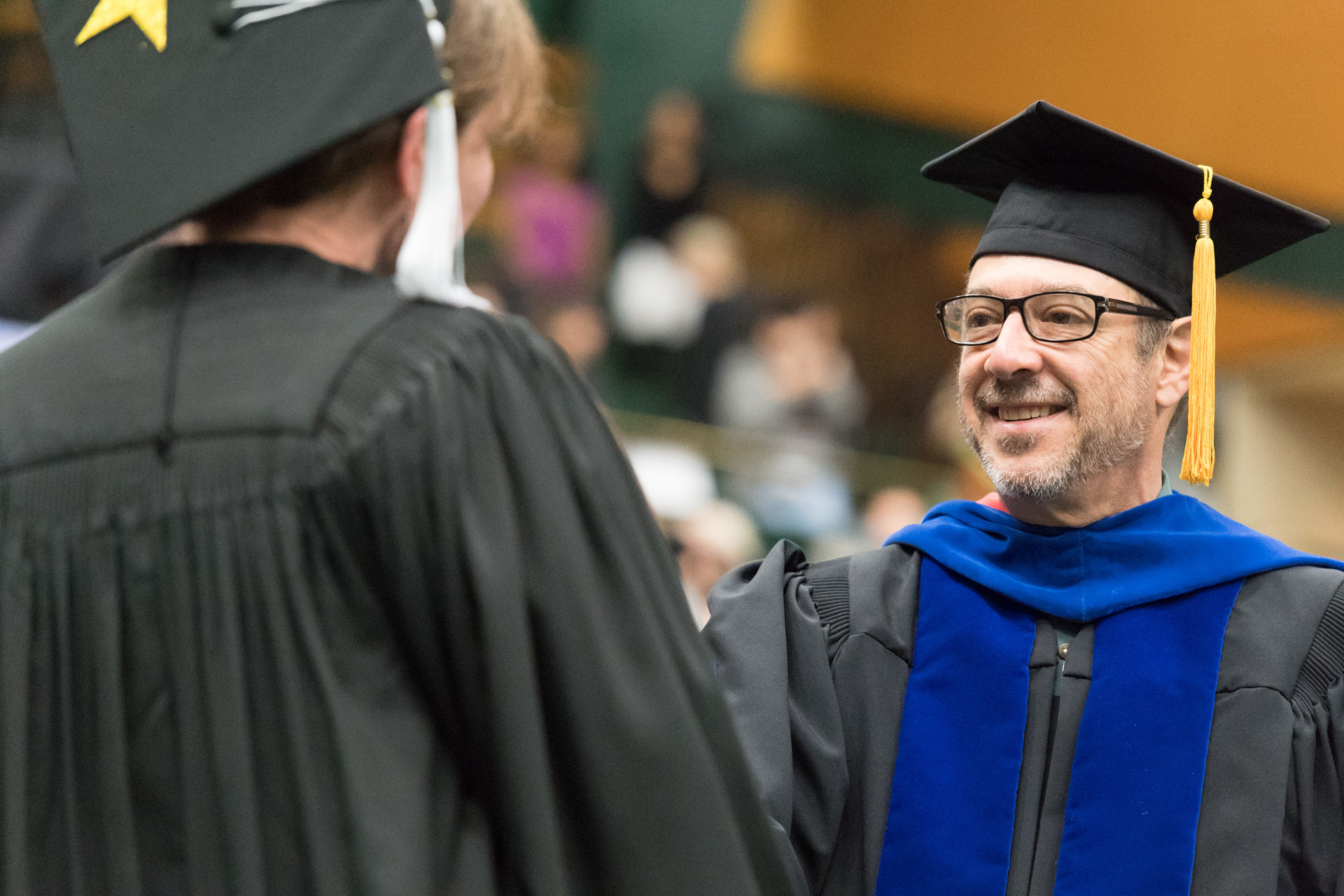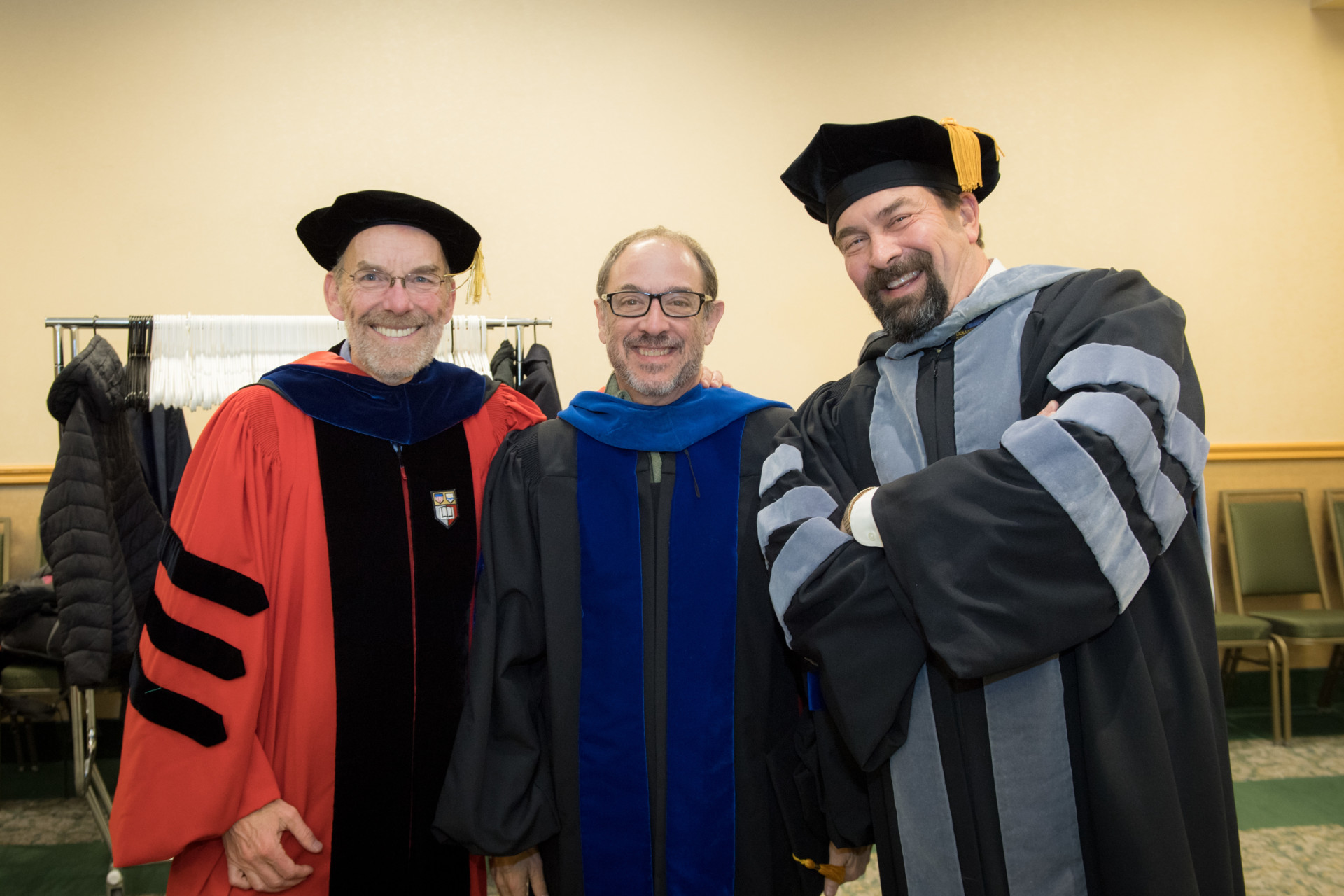
CSU Provost and Executive Vice President Rick Miranda sat down with SOURCE to look back at his career and what he sees ahead.
Rick Miranda has served as Colorado State University Provost and Executive Vice President for more than a decade. He will step aside at the end of the month, when Mary Pedersen takes over the role on Aug. 1.
“CSU is indebted to Rick for his years of guidance and leadership, and for his many years of service to our institution,” said CSU President Joyce McConnell, who served as provost at West Virginia University before joining CSU last year. “The role of a provost is never easy, but Rick showed that a great provost can create the opportunity for the institution to succeed on many levels. He has helped CSU strengthen the quality of learning, get more students to graduation, create new infrastructure, and attract and retain the best teachers and researchers. I appreciate his advice and knowledge, and I most appreciate his warm heart and sense of humor. We are so fortunate to have him as part of our CSU community.”
When Provost Tony Frank became interim president in 2008, he asked Miranda, who had been dean of the College of Natural Sciences since 2002, to assume the office on an interim basis. After a national search, Miranda was named provost in February 2010.
Miranda, who joined the CSU mathematics faculty in 1982 with a Ph.D. from the Massachusetts Institute of Technology, had also previously served as chair of the Department of Mathematics and associate dean of the college.
After a year’s sabbatical during which he plans to pursue research in his field of algebraic geometry, Miranda will return to the classroom. He will also be serving as the chief academic officer of the CSU System, working with Chancellor Frank, the Board of Governors and the Colorado Department of Higher Education to develop and implement academic programs for the three campuses of CSU: Fort Collins, Pueblo and Global.
“Rick Miranda’s leadership as provost and executive president was invaluable to me during my tenure as CSU president, and his strong working relationships, deep knowledge, and sense of humor have prepared him well for his next roll as Chief Academic Officer of the CSU System. I look forward to continuing to work with him,” Frank said.
We asked Miranda about the past decade and what he sees ahead.
Q. Were you thinking about becoming provost in 2009?
A. No, it all happened fairly suddenly. I did apply for the job while I was interim, but we had to get to work right away, because Colorado was just getting hit by the recession. We were facing deep cuts, and had to use American Recovery and Reinvestment Act stimulus funds to cover the budget – it was similar to what the university is facing now with the economic effects from the pandemic.
It was a big job, and it took about three years to get the budget to stability. By 2012, we were in a position to begin moving forward again.
Q. You have a dual title: Provost and Executive Vice President. Which of those two roles do you prefer?
A. They’re both important for the University, and I’ve enjoyed both. The Provost is essentially the vice president for academic affairs, working with the deans of the colleges, while the Executive Vice President oversees the vice presidents of the other divisions – student affairs, research, university operations, enrollment and access and the like – and has had responsibility for strategic planning and budgeting.
I’ve enjoyed both roles, and I think we have accomplished some great things over the past 10 years. The Executive Vice President role is really in the center of the bullseye, and coming from the academic side, I had to learn a lot. I was extremely fortunate to have some great people to lean on in vice presidents like Blanche Hughes in student affairs, Lynn Johnson in university operations, and Alan Rudolph, and before him Bill Farland, in research.
“Being an academic, my heart is really with the colleges, and I’m happy to have had the opportunity to work with some extremely talented deans to build great departments and hire some outstanding faculty over the years.”
Being an academic, my heart is really with the colleges, and I’m happy to have had the opportunity to work with some extremely talented deans to build great departments and hire some outstanding faculty over the years.
Q. Which of your many accomplishments make you most proud?

Rick Miranda congratulates graduates of the College of Liberal Arts in 2018. Photo by William A. Cotton
A. First, there are the new programs we’ve put in place: new undergraduate degrees, certificates and master’s programs. Our online education offerings have tripled, and that was even before we shifted to all remote learning and teaching in March, and we have seen steady growth in enrollment and a continuing increase in the diversity of the student body.
We’ve also been able to support student success in a number of ways – for example, implementing the Academic Success Coordinator network – that have increased student retention and graduation rates to record levels while serving an evolving population that includes a greater number of students from at-risk backgrounds.
As part of the effort to increase access to higher education for Colorado students who were facing financial crisis during the Great Recession, we established the Commitment to Colorado scholarship program specifically for low-income in-state students. It has been so successful, other universities and colleges in the state adopted it, and the Colorado Tuition Assistance Program is celebrating its 10th anniversary this year.
I’m also quite proud of CSU’s sustainability efforts, with three STARS Platinum ratings, and breadth of research and teaching in the field across campus. The School of Global Environmental Sustainability had just been established when I became Provost, and now enjoys a national and international reputation for excellence.
Engagement is part of our land-grant mission, and I’m proud of the work of our faculty in this area, and am especially thankful to those serving on the Provost’s Council for Engagement. Our efforts have been recognized by the APLU with two national awards, but more importantly, we have been able to serve the citizens of Colorado and beyond by sharing our expertise and scholarship.
“Engagement is part of our land-grant mission, and I’m proud of the work of our faculty in this area, and am especially thankful to those serving on the Provost’s Council for Engagement.”
I’ve seen the university’s research enterprise continue to grow, topping $400 million for the first time this year and adding a number of strategic partnerships. And I’m very pleased with how the Council of Chairs has been able to work together on proposals for academic improvements to bring forward to the President.
Of course, there are the new buildings all over campus and the innovative enterprises in them that have grown over the past decade: The Energy Institute on the Powerhouse Campus; the One Health Initiative at the Translational Medicine Institute; the Center for Healthy Aging in the CSU Health and Medical Center; the Infectious Disease Research Center on the Foothills Campus that houses BioMARC, and the new biomedical incubator with several industry partners.
And I’m happy to say that we have accomplished all of this without adding any staff to the Provost’s office. We did add one new vice provost – Laura Jensen of the Office of Institutional Research, Planning and Effectiveness – but otherwise, we’ve been able to keep it pretty lean.
Q. Is there anything you would have done differently?
A. Well, we have worked hard to be more nimble to launch new majors, but we have a ways to go; it still takes over a year to install a new program, and there are a number of opportunities for new programs especially in engineering, computer sciences and veterinary medicine.
Other things still need to be completed: We have a major in SoGES designed and ready to be proposed, and a new Honors College concept would be great, too.
Q. Final thoughts?

Rick Miranda poses for a photo at graduation in 2017 John P. Hayes (left), dean of the Warner College of Natural Resources, and CSU President Tony Frank. Photo by Joe Mendoza
A. I’d like to thank Tony Frank for the opportunity to serve in this position; I think we made a good team.
Thank you also to members of the president’s cabinet and the Council of Deans for their leadership, and faculty and staff who very graciously listened when I spoke – and spoke up so that I could listen. I hope I have served them well to advance the university as much as we could in this period.
I’ll continue to be supportive to President McConnell and her administration in the coming years, too; these are challenging times and we’ll need to all work together to realize the potential we have here at CSU.